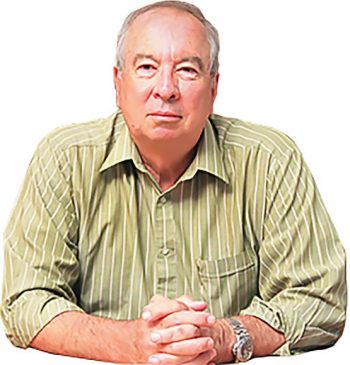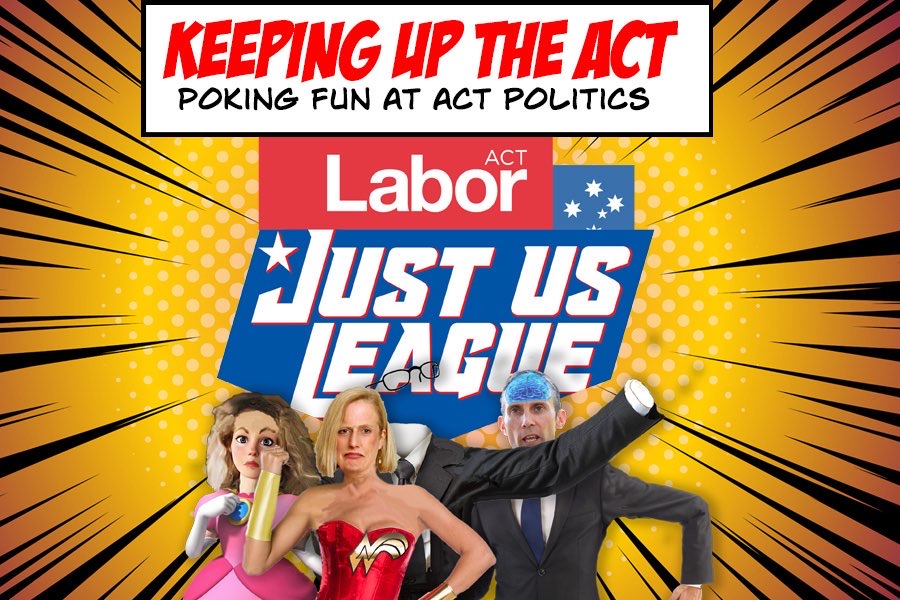
“Some people have a large number of fast-twitch muscle fibres that are ideal for sprinting, but others have slow-twitch muscle fibres that are suited to long-distance running,” writes “Whimsy” columnist CLIVE WILLIAMS.
LOOKING at top sportspeople, as one does, I have wondered how it is that people of the same size can vary so much in performance.

Clearly, some people are physically suited to their sport – shot putters are big and bulky, high jumpers are tall and lanky, long-distance runners are small and thin, and sprinters are stocky and muscular.
There are, of course, exceptions to the rule – ace sprinter Usain Bolt is tall (195cm) and lanky.
Athletic performance it seems is influenced by both genetic and environmental factors.
Many physical traits help determine an individual’s athletic ability, primarily the strength of muscles used for movement (skeletal muscles) and the predominant type of fibres that compose them.
Some people have a large number of fast-twitch muscle fibres that are ideal for sprinting, but are less useful for distance running. Others have slow-twitch muscle fibres that are suited to long-distance running but are not much good for sprinting.
Ethnicity can also be a factor. Generally, black men and women have better genetics for building muscle than white men and women. They also have faster twitch muscle fibres and higher bone density. This advantage is evident from the 100-metre starting line-up at any major international athletics event.
Scientists have found that there are at least 200 known genetic variants linked to fitness and physical performance. Some are obvious. Height is important for basketball players, for example, and that’s about 80 per cent genetic.
Environmentally, you have an advantage if your parents are physically active, you have access to good coaching, and grow up in a community that is sports-minded – think Australia swimming, NZ rugby and England cricket.
Writer Denis Norden once observed of English cricket: “It’s a funny kind of month, October. For the really keen cricket fan it’s when you discover that your wife left you in May.”
What else makes an athlete better than the rest? Well, height, weight, reach, strength, speed, power, agility, flexibility, mobility, balance, timing, and intelligence are factors – but motivation and mental strength are also key elements.
High-performance athletes are motivated by the desire to be better than their opponents and to continue to improve on their personal best performances. They will be patient and persevere when working on their skills and focus on their goals.
Lifestyle is also important. That includes a good diet and not being stressed out about other issues in life. It also means no smoking, moderate habits and no mind-bending drugs.
Age of course is a factor, too. Most sportspeople retire before they reach 30 years of age. However, all is not lost for us older performers – many marathon runners seem to be at their best between 40 and 50 years of age. Longevity in sport is also possible when skill and experience are as important as athleticism – here footballers Lionel Messi and Cristiano Ronaldo come to mind.
To be considered to be the greatest in a sport it seems that a sportsperson must have the following six attributes: outstanding ability, suitability as a role model, peer acclamation, consistency of performance, longevity of performance and the ability to overcome adversity.
I‘ll close with a couple of American football anecdotes:
In the US talented young players often get to college on sports scholarships, but still have to do some academic work. Eugene was seen in the library looking around the shelves and seeming confused. A librarian went over and asked if she could help. “I have to read a play by Shakespeare,” he said. The librarian replied, “I can help you with that – which one?”. Eugene thought hard for a few moments and answered, “William”.
Randy took his friend Robin to Robin’s first American football game. (note how I’m avoiding gender bias). They had great seats right behind their team’s bench. After the game, Randy asked Robin about the experience.
“Oh, I really liked it,” Robin replied, “especially the tight pants and all the big muscles, but I just couldn’t understand why they were killing each other over 25 cents.”
Dumbfounded, Randy asked, “What do you mean?”
“Well, they flipped a quarter at the start and one team must have got it because for the rest of the game, all they kept screaming was, ‘Get the quarter back! Get the quarter back!’ I’m like, Hello-o-o? It’s only 25 cents!”
Clive Williams is a Canberra columnist.
Who can be trusted?
In a world of spin and confusion, there’s never been a more important time to support independent journalism in Canberra.
If you trust our work online and want to enforce the power of independent voices, I invite you to make a small contribution.
Every dollar of support is invested back into our journalism to help keep citynews.com.au strong and free.
Thank you,
Ian Meikle, editor









Leave a Reply